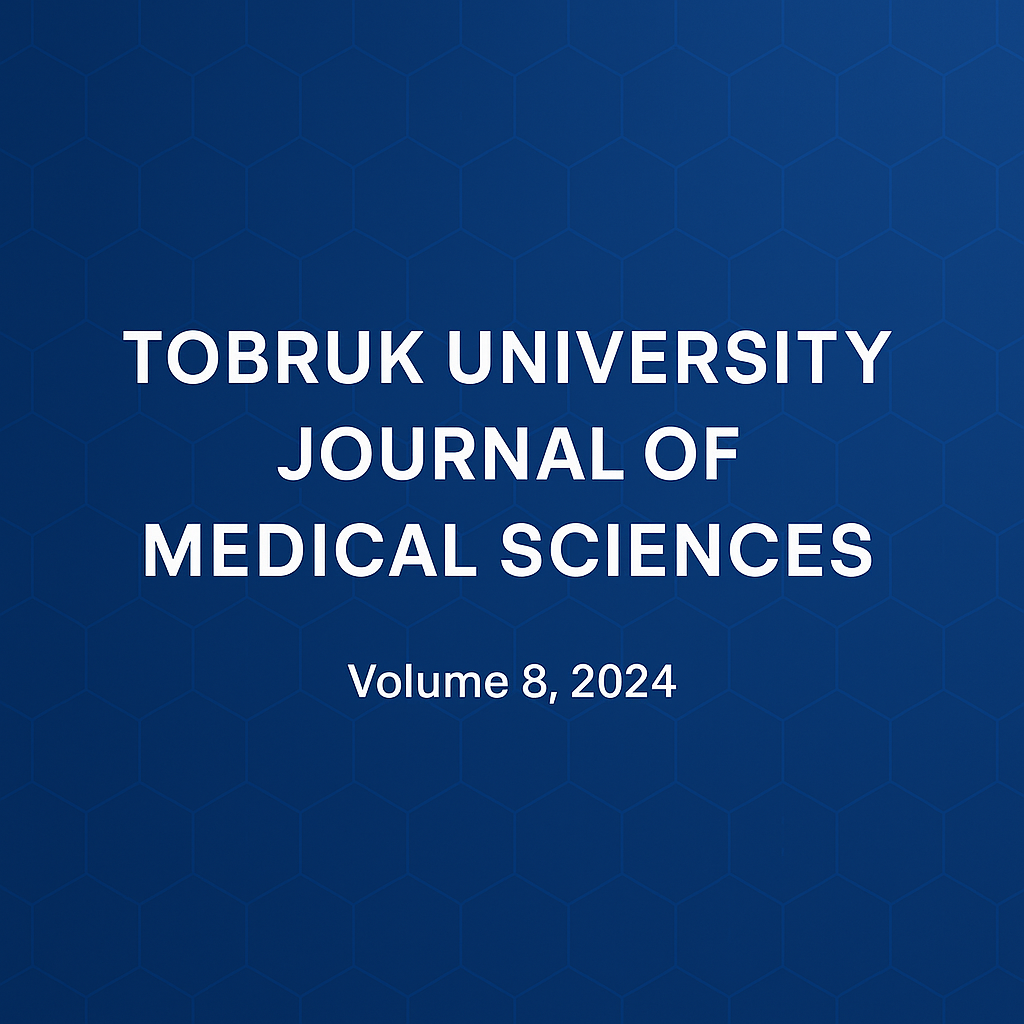Prevalence of Toxoplasmosis Among Pregnant Women in Benghazi City / Libya
DOI:
https://doi.org/10.64516/qfmhwm06Keywords:
Toxoplasmosis, Toxoplasma gondii, pregnant women, Benghazi, LibyaAbstract
Toxoplasmosis is caused by Toxoplasma gondii, an obligate intracellular parasite that infects both humans and animals as a zoonotic pathogen widespread in nature. This study aims to determine the prevalence of toxoplasmosis among pregnant women in Benghazi City and identify risk factors that affect the infection rate. A total of 227 women who attended different private medical laboratories in Benghazi City to perform toxoplasma screening tests during pregnancy were selected. The duration of the study was from January 1, 2023, to October 1, 2023. In addition, patients were examined for antibodies to Toxoplasma gondii (IgG) and (Ig M) by the commercially available technique of ELISA. To be more specific, five age groups were used. Consequently, the total number of positive infected pregnant women was 44.1%, while the number of negative non-infected women was 55.9%. The seroprevalence of active toxoplasmosis was 44.1%, and chronic infections were 30%. The patient’s age had no significant relationship with the T. gondii infection. To conclude, with the publication of health education and disease definitions, the incidence of infection will be reduced among pregnant women who are more susceptible to Toxoplasma infection. Therefore, pregnant women should be screened for toxoplasmosis regularly. This study aims to evaluate the seroprevalence of T. gondii infection among pregnant women of various age groups and to identify associations between infection and certain risk factors for infection.
References
1. Robert-Gangneux, F., & Dardé, M. L. (2012). Epidemiology of and diagnostic strategies for toxoplasmosis. Clinical microbiology reviews, 25(2), 264–296.
2. Dubey, J.P. (2010). Toxoplasmosis of Animals and Humans (2nd ed.). CRC Press.
3. AL-Hindi, A. I. and Lubbad, A.H. (2009). Seroprevalence of Toxoplasma gondii among Palestinian aborted women in Gaza. Annals of Alquds medicine.
4. Munay younus Al Abbar4N. E. E. S. R. (2021). Seroprevalence of IgG and IgM of Toxoplasma gondii among pregnant women at El-Beida city-Libya. International Journal of Medical Science in Clinical Research and Reviews 4(05), Page: 7-13.
5. Ajedi, Adel S S Incidence rates of Toxoplasma gondii chronic infection among aborted women in Elmergib region, Libya. International Science and Technology Journal.(2024):
6. Gashout A, Lazrag T, Gashout H, Swedan T.(2008): Qualitative assessment of risk for spontaneous abortion associated with toxoplasma and rubella: immunity appraisal. Libyan J Infec Dis. 2008;2(1):52–6.
7. Prevalence of Toxoplasmosis antibodies in blood donors in the Tripoli area Khaled A. Alawaini , Safia O. Albhlool,Entesar O. Shaife, Hanein A. Qreiwa and Manal K. Abodena.
8. Zaed , H. A., Elgobbi , A. M., & Faraj, F. S. (2021). The incidence of Toxoplasma gondii infection in some patients from Sirte, Libya. Sirte University Scientific Journal , 1-10.
9. Mousa DA, Mohammad MA, Toboli AB. Toxoplasma gondii infection in pregnant women with previous adverse pregnancy outcome. Med J Islamic World Acad Sci. 2011;19(2):95 102.
10. Boshapor S. and Kassem H. H. (2015): incidence of toxoplasma antibodies among women benjawad, Libya. Proceedings of 32nd The IIER International Conference, Dubai, UAE, 8th August 2015, ISBN: 978-93-85465-69-7.
11. Nosseur M. El-sayed and Saleh A.S. Almannoni (2016): Seroprevalence of Toxoplasma gondii infection and associated risk factors among pregnant women in Sebha region, Libya. Int. J. of Allied Med. Sci. and Clin.Research Vol-4(3) 2016 [383-391].
12. Al-Zaaiydi, J.M. (2007). Seroepidemiological study of Toxoplasmosis in women in some areas of El-Jabal El-Akhdar distract. [In Arabic], Thesis, Zoology Department, Faculty of Sciences, Omar Al-Mukhtar University, Albeda –Libya.
13. Dubey, J.P. (2009). Toxoplasmosis of Animals and Humans (2nd ed.). CRC Press.
14. Zhu, S., VanWormer, E., & Shapiro, K. (2023). More people, more cats, more parasites: Human population density and temperature variation predict he prevalence of Toxoplasma gondi oocyst shedding in free-ranging domestic and wild felids. PloS one, 18(6), e0286808.












